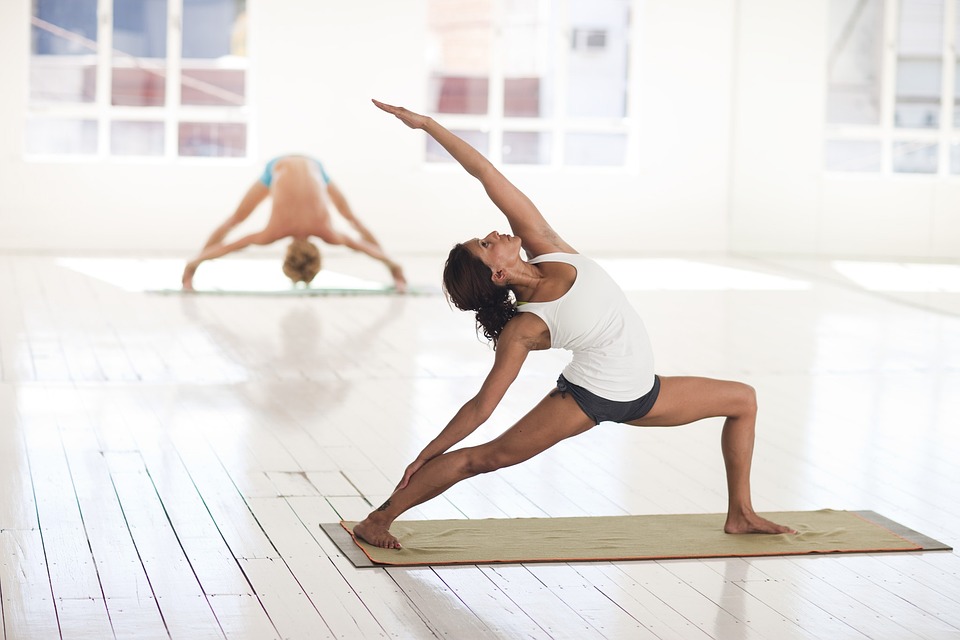There has been a lot of stress for the world in the last year and a half that is beyond what is typical. As anxiety increases about new variants of COVID-19, it can feel increasingly difficult to manage the uncertainty of our current times. According to Ayurvedic experts, self-care involves focusing on your chakras in order to manage stress and rid yourself of negative energy. Simple things like DIY face masks, naps, and CBD can help to keep your chakras in balance. Keep reading to learn what they are, how they play a role in your physical and emotional wellbeing, and which one has the biggest impact on maintaining balance in times of turbulence.
What is the Heart Chakra?
The heart chakra is responsible for our capacity to love, feel balance and connection in our lives. The heart chakra, located in the heart region in the center of the chest, is associated with the color green and the element of air. This chakra is responsible for regulating the energy associated with self-acceptance, self-love, compassion, openness, and unconditional love of others. In other words, it helps to ensure that we treat ourselves and others with kindness and respect.
What is Heart Chakra Healing?
Heart chakra healing refers to practices that aim to improve the heart chakra’s health. This may involve activities such as clearing out negativity, promoting positive energy, and strengthening the connection between the body and the heart chakra. Heart chakra healing addresses imbalances in the body, mind, and spirit by using a number of holistic remedies. Remedies that seek to restore harmony within the body often use a variety of techniques like catharsis, aromatherapy, sound healing, movement and color therapy, meditation, and crystal healing.
Do You Have a Deficient or Excessive Heart Chakra?
Did you know that there are two types of chakra imbalances: those that are physical and those that are emotional?
A deficient heart chakra is one that is passive or energetically “numb.” An excessive heart chakra is one that is energetically aggressive or manic.
Here’s a breakdown of the difference between the two:
If our energy is deficient, we may feel lifeless, sluggish, passive, or blocked. We may feel like we’re not receiving enough energy from within.
Excessive = lively, agitated, reactive, aggressive, outwards (too much energy flows in).
If your heart chakra is underactive, you may experience symptoms such as social anxiety, isolation, and self-critical thoughts. If your heart chakra is overactive, you may be clingy, smother people with displays of love, or play the role of martyr.
What kind of imbalance do you have? It’s also possible to fall somewhere in the middle.
Here are 8 stretches to open up your heart chakra:
1. Eagle Arms
Place your right elbow under your left, turn your palms in towards each other, and hook your hands together, dropping your shoulders for ease. Switch your arms so that your left elbow is wrapped under your right. This can be achieved by simply placing the lower half of the body in any desired position, as Schmookler explains. In order to relieve tension in your shoulders, you can also lift your elbows so that they are in line with your shoulders.
2. Locust Pose
Assuming the position of stomach-down on your mat, ground your legs and hips. Then, lifting the trunk, take the spine into extension–this is per the instruction of Jeffrey Posner, a New York- and New Jersey-based yoga teacher who is also the creator of Yoga Framework. ” Do not use your hands or arms for leverage when you are on the floor. To deepen the stretch, slowly lift your legs while keeping your spine straight. This is often called Superman pose.
3. Camel Pose
MacGregor tells us to start in a kneeling position, making sure that our knees and feet are aligned with each other and that both are hip-width apart. ” Breathe in as you raise your ribs up and create a space between each joint in your spine. As you engage your back muscles, tilt your pelvis forward slightly, then exhale and bring your hands back behind you. Place the palms of your hands on the soles of your feet, with your fingers pointing towards your toes. Rotate your shoulders in and drop your head back.
Stay in the position for five deep breaths before slowly shifting back to the starting position and releasing one vertebra at a time. Thrusting the heart chakra forward can help you physically open and expand this energy center, says Kavanagh.
4. Half or Full Bind
There are two ways you can practice binds while seated – with one leg bent or in a side angle. In order to create a half-bind, Schmookler says to sweep the arm opposite from the bent leg behind you and reach for the top of your bent thigh. To do a full bind, she says you should reach your other arm (the one aligned with your bent leg) underneath that thigh, connecting it with your other hand. Once you’re in the lock, she says, pull your hands apart and rotate your chest upward to open your heart deeply.
5. Cobra Pose
MacGregor gives the following instructions: start by lying on your stomach, with your toes pointed and your legs aligned hip-width apart. “Engage the thighs and soften the glutes. Breathe in as you raise your upper body off the ground, supported by your elbows. Position your elbows on the ground in front of your shoulders, and stretch your neck.” Then, she advises to concentrate on raising your sternum and extending your arms forward. In your final pose, breathe in for five full breaths before lowering back down, whether you stay on your elbows or push up to your hands.
6. Chest expansion
Schmookler suggests interlacing all fingers behind the back and pressing the grip towards the floor to open the heart space. Instead of sitting back on your heels, try bending forward at the waist while maintaining your grip.
7. Fish or Supported Fish
Place a yoga block, bolster, or book under your shoulders, with your chest shifted upward, to perform a supported fish pose, says Schmookler. From a seated position, extend your legs forward in front of you. The woman explains how to get into the yoga pose by telling the person to walk their palms behind their glutes, pointing their fingers towards their glutes, and lowering onto their forearms. To do this pose, kiss your shoulder blades together and tilt your head back. If you feel like your head is going to fall, you can put a block under it for support.
8. Puppy pose
MacGregor says to start off in a Tabletop Pose, which is when your hands and legs are shoulder- and hip-width apart while you are on your hands and knees. The goal is to maintain a flat back throughout the movement.” Walk your hands forward slowly until your chest is close to the ground. The goal is to keep your back flat during the whole movement. She says to lift the ribs away from the hips and to place either the forehead or the sternum on the ground, depending on which is more accessible and comfortable for you. Remain in the pose for five deep breaths with your eyes closed.
It’s essential to remember that, to strengthen the heart chakra, you need to be intimate with the wounds you carry. You cannot have a deep emotional connection with someone unless you are willing to be open and vulnerable with them. Therefore, you may feel a sudden release of emotion while doing any of these poses, according to Kavanagh. She suggests that it is normal to feel emotional and that tears may come during or shortly after the experience. The release of the blockage reflects that healing is taking place.
19 Signs of an Unhealthy Heart Chakra
The best way to determine if you need to heal your heart chakra is to become aware of your thoughts, feelings, actions, and physical sensations.
Here are some signs to look out for:
- You feel disconnected from the people around you (even those closest to you)
- You are withdrawn and try to avoid socializing with people
- You tend to be needy in your relationships, OR …
- You tend to feel emotionally distant in your relationships
- You are terrified of being alone
- You gain your self-worth from other people (you’re a people-pleaser )
- You find it hard to forgive and you hold grudges easily
- You find it hard to let go of bitter and angry thoughts
- You always feel a sense of anger towards other people/life
- You suffer from social anxiety
- You frequently feel jealous of other people
- You tend to have many self-critical thoughts
- You are constantly replaying or reliving your trauma
- You carry a deep sense of fear
- You have adopted the role of the victim or martyr
- You have poor boundaries making you prone to developing codependent relationships
- You struggle to give or receive love freely
- You are constantly suspicious and mistrusting of other people
- You have issues with the heart, lung or chest region such as asthma, high blood pressure or poor blood circulation
- You feel a constant sense of heaviness in your chest
How many of these signs can you relate to?
6 Heart Chakra Healing Practices
A healthy heart chakra looks and feels balanced. Here are the best heart chakra healing practices out there which will help you balance this energy center:
1. Go forest bathing
Best suited to: deficient and excessive blockages
Spending time in nature can help to open your heart chakra, which is associated with the color green. Shinrin Yoku, or forest bathing, is a term that originated in Japan with many scientifically proven benefits. If you don’t live near a forest, don’t worry. All you need to do is go to a park, forest, or other places with lots of plants. If you live in a city with no nature, try getting a pot plant or indoor shrubs to encourage heart chakra healing. This will allow you to still experience the benefits of nature, even if you are not able to be in it as often as you would like.
2. Do a loving-kindness meditation
Best suited to: deficient and excessive blockages
A balanced heart is beautiful. It breaks down the barrier that separates people and shares love and kindness with others. If your heart chakra feels like it’s blocked, try doing the loving kindness meditation.
Sit in a quiet spot and connect with your breath. Allow your chest area to relax as you direct loving energy towards yourself. Choose four different types of people to direct loving energy towards. This can include a loved one, a person close to you, a neutral person (like an acquaintance), and an enemy or hostile person. Try to imagine sending out loving energy, or saying something like “I radiate love to you” to help with this meditation.
3. Establish clear personal boundaries
Best suited to: excessive blockages
Look at areas of your life where you are letting others cross your boundaries. When do you agree to something even though you really don’t want to? Who in your life demands too much from you? What areas of your life make you feel anxious and ungrounded? It is important to be clear about your boundaries and to communicate them to others in a respectful way. Practice assertiveness and take care of yourself.
4. Use the following herbs
Best suited to: deficient and excessive blockages
There are many herbs that can be used to help open and clear the heart chakra. Some of the most popular include rose, astragalus, holy basil, hawthorn, nettle, hops, and angelica.
You can make tea out of fresh or dry herbs, by steeping them in boiling water for several minutes. If you’re looking to soothe your heart chakra, I recommend Buddha Teas’ organic Heart Chakra Tea. You can find it for purchase here. This tea has been made with rose quartz.
5. Practice empathy by asking “What if?”
Best suited to: deficient and excessive blockages
The mind can easily come to hasty conclusions about others. Often these conclusions are judgmental , harsh, and unloving. The next time you find yourself feeling angry towards another person, ask the question “What if?” For example, if someone is rude to you, ask, “What if that person just lost their job?” Or if you struggle to get along with someone else, ask, “What if that person’s childhood traumatized them so much that they can’t relate to others?” Remember that there is always a story behind the behavior of others.
6. Show self-love by giving yourself the permission to feel
Best suited to: deficient and excessive blockages
We are often violent towards ourselves without realizing it when we push away our emotions. Our emotions should not be suppressed or ignored, but rather accepted as part of our human nature. It’s okay to feel unhappy, angry, sad, bored, jealousy, and all the emotions you usually try to avoid. Secure yourself with your breath, and permit these sentiments to fade away. Read more about opening your heart and experiencing your emotions.



